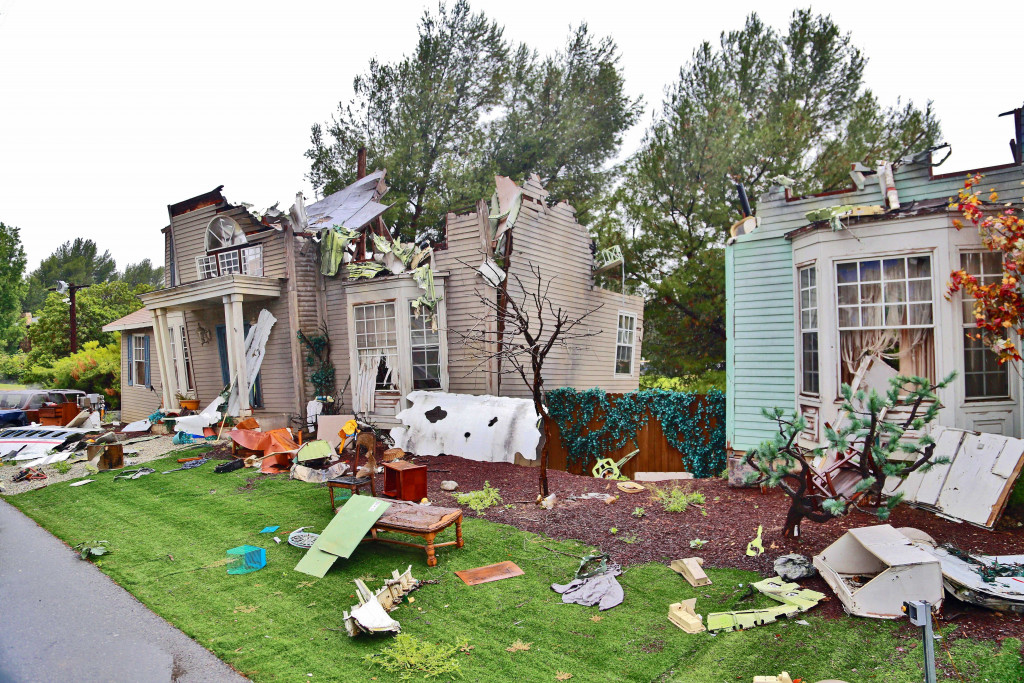The destructive power of storms can be a devastating thing to witness. Storms, such as hurricanes, tornadoes, and tropical cyclones, are among Earth’s most potent weather occurrences and can cause extensive damage to homes and properties. According to the National Weather Service, severe thunderstorms cause an average of $15 billion in property damage in the United States each year.
When a storm makes landfall near residential areas or other populated regions, there is an increased chance of structural damage to homes and other buildings. The wind carried by these storms can reach upwards of 100 mph or more, resulting in widespread destruction from fallen trees, flying debris, and broken windows. In addition to wind damage, many homes are also vulnerable to flooding due to heavy rain accumulation, which can cause considerable water damage leading to further structural issues if not addressed quickly enough.
It’s not just coastal areas affected by storms; inland locations may be at risk, mainly if they lie along tornado alleys. Tornadoes often occur with little warning and have been known to uproot entire houses entirely off their foundations while also hurling large objects far distances, all of which adds to even more costly damages.
It can be an unpleasant situation to have to deal with a weather-damaged home. But, as unpleasant as it may be, the first step is to assess the damage and work on restoring your home to its original condition. The following steps can help you fix a storm-damaged house.
Contact Your Insurance Provider
Restoring a storm-damaged home can be financially daunting, especially if the repairs require extensive work. Sometimes, homeowners may even resort to demolishing the building and starting from scratch. The repair materials and labor costs can range from hundreds to thousands of dollars depending on the damage sustained by the home. And for those who don’t have an emergency fund or enough money saved up, taking out expensive loans is often their only option.
That’s where homeowners insurance comes in. Homeowners insurance helps protect property owners from many losses related to storms and other disasters. It covers physical damage to the home and personal possessions, plus liability claims if someone is injured inside it. Homeowners’ insurance policies vary significantly in coverage amounts and types, so it’s essential to do research before obtaining one that meets your needs and budget.
In addition to covering physical property damage caused by storms, homeowners insurance also provides coverage for living expenses incurred. At the same time, a home is being repaired or reconstructed after a disaster-related incident. This includes paying for temporary living arrangements such as hotel stays or meals eaten away from home due to displacement caused by the storm. Most insurance companies provide a maximum amount for Living Expense coverage that depends on how big the policy is and how long it takes for repairs to be completed.
Furthermore, some states offer additional forms of assistance during times of crisis, such as FEMA assistance programs which can help cover costs associated with repairing storm damage beyond what would typically be covered under most standard homeowner’s insurance policies.
Check What Can be Salvaged
Once you’ve contacted your insurance provider, it’s time to assess the damage and start making repairs. Examine the home’s exterior and interior walls, windows, doors, roofing, and other essential components of the building. Start by checking what can still be salvaged or repaired instead of replaced. This will help minimize expenses related to improving materials and labor costs.
Inspect for any structural damage as well. See if any cracks may have appeared in foundations due to flooding or other water-related incidents caused by storms. Additionally, check for damaged electrical wiring or plumbing fixtures that need to be replaced before inhabiting the house again.
Lastly, look into replacing any furniture or appliances damaged due to the storm. This includes refrigerators, stoves, washing machines, and other large items affected by water or wind damage.
Create a Restoration Plan

Once you’ve determined what needs to be repaired, it’s time to create a restoration plan. This includes setting out a timeline for repairs and allocating the financial resources required for the project. A restoration plan should also have safety measures such as wearing protective gear if operating power tools or removing debris from the property.
Also, please research local contractors who can help with the repairs, as some insurance policies require that homeowners use certain types of companies for specific tasks. It’s essential to vet any potential contractor before hiring them so you know you are getting quality service at reasonable prices.
Storm damage restoration services can also be helpful when dealing with a damaged home. These services provide specialized help to restore severely damaged homes and can be instrumental in getting the job done quickly, efficiently, and cost-effectively.
Once you have a plan in place, it’s essential to follow it closely to restore your home as soon as possible. Doing this will ensure you get back into your house safely and securely without further delay.
Final Thoughts
The aftermath of a storm can be overwhelming and expensive. But with the right resources, homeowners can get their houses back in order quickly, safely, and cost-effectively. It’s essential to contact your insurance provider first before making any repairs and create a restoration plan that includes financial resources and timelines for each task. Additionally, research contractors and specialized services can help you restore your home with minimal effort. Following these steps will ensure that your house is restored to its former glory as soon as possible.







